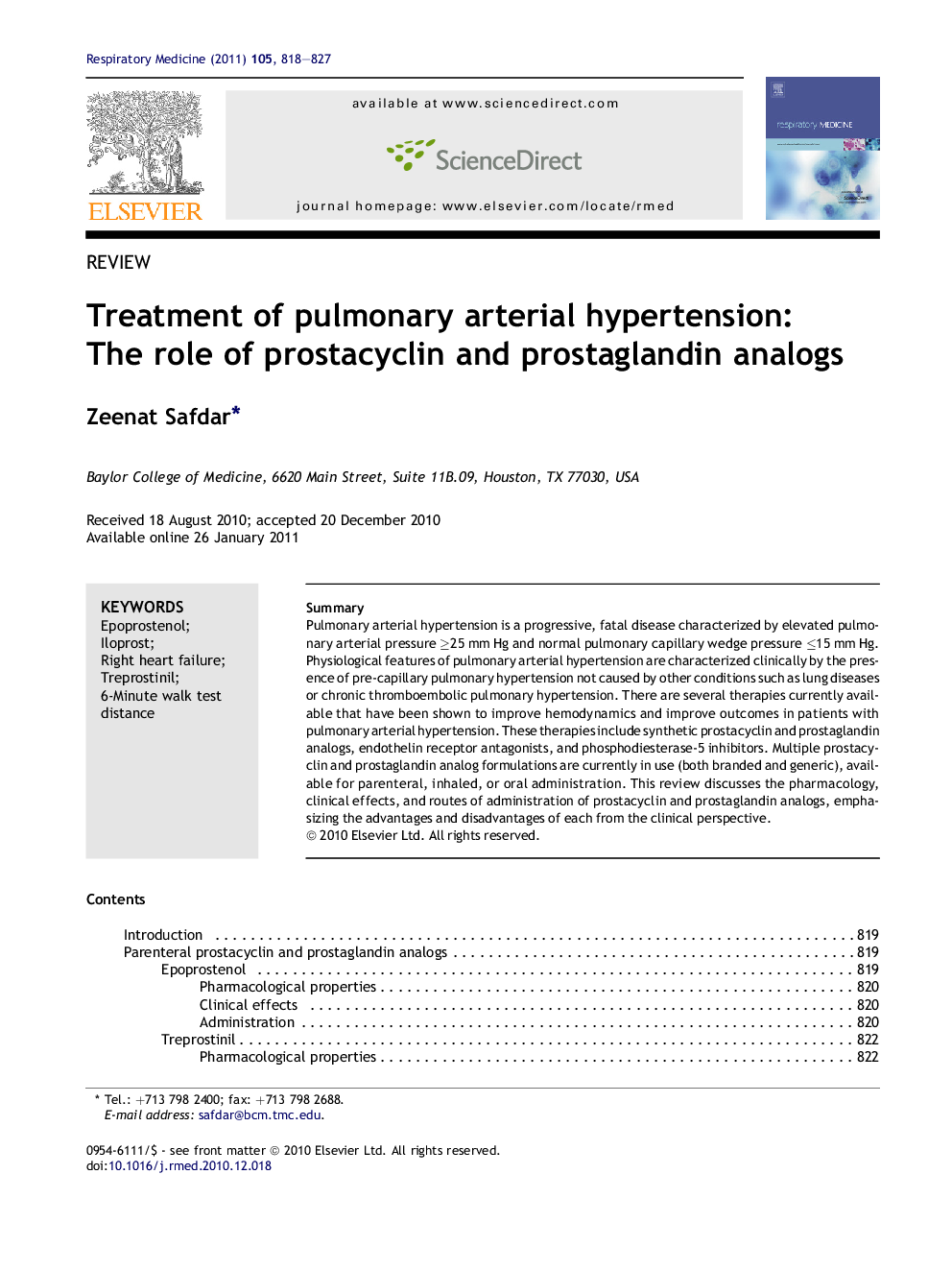| Article ID | Journal | Published Year | Pages | File Type |
|---|---|---|---|---|
| 4210357 | Respiratory Medicine | 2011 | 10 Pages |
SummaryPulmonary arterial hypertension is a progressive, fatal disease characterized by elevated pulmonary arterial pressure ≥25 mm Hg and normal pulmonary capillary wedge pressure ≤15 mm Hg. Physiological features of pulmonary arterial hypertension are characterized clinically by the presence of pre-capillary pulmonary hypertension not caused by other conditions such as lung diseases or chronic thromboembolic pulmonary hypertension. There are several therapies currently available that have been shown to improve hemodynamics and improve outcomes in patients with pulmonary arterial hypertension. These therapies include synthetic prostacyclin and prostaglandin analogs, endothelin receptor antagonists, and phosphodiesterase-5 inhibitors. Multiple prostacyclin and prostaglandin analog formulations are currently in use (both branded and generic), available for parenteral, inhaled, or oral administration. This review discusses the pharmacology, clinical effects, and routes of administration of prostacyclin and prostaglandin analogs, emphasizing the advantages and disadvantages of each from the clinical perspective.
